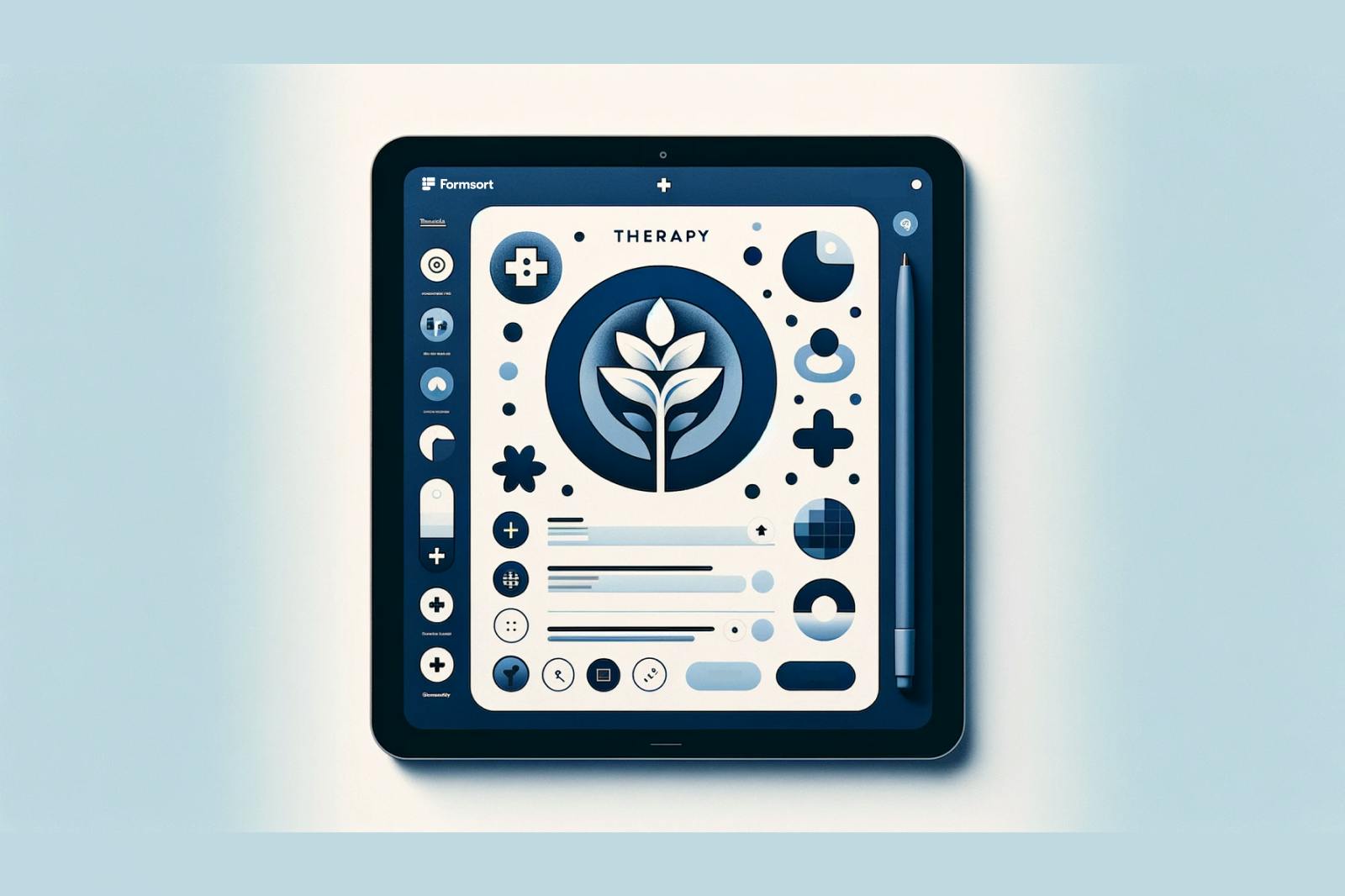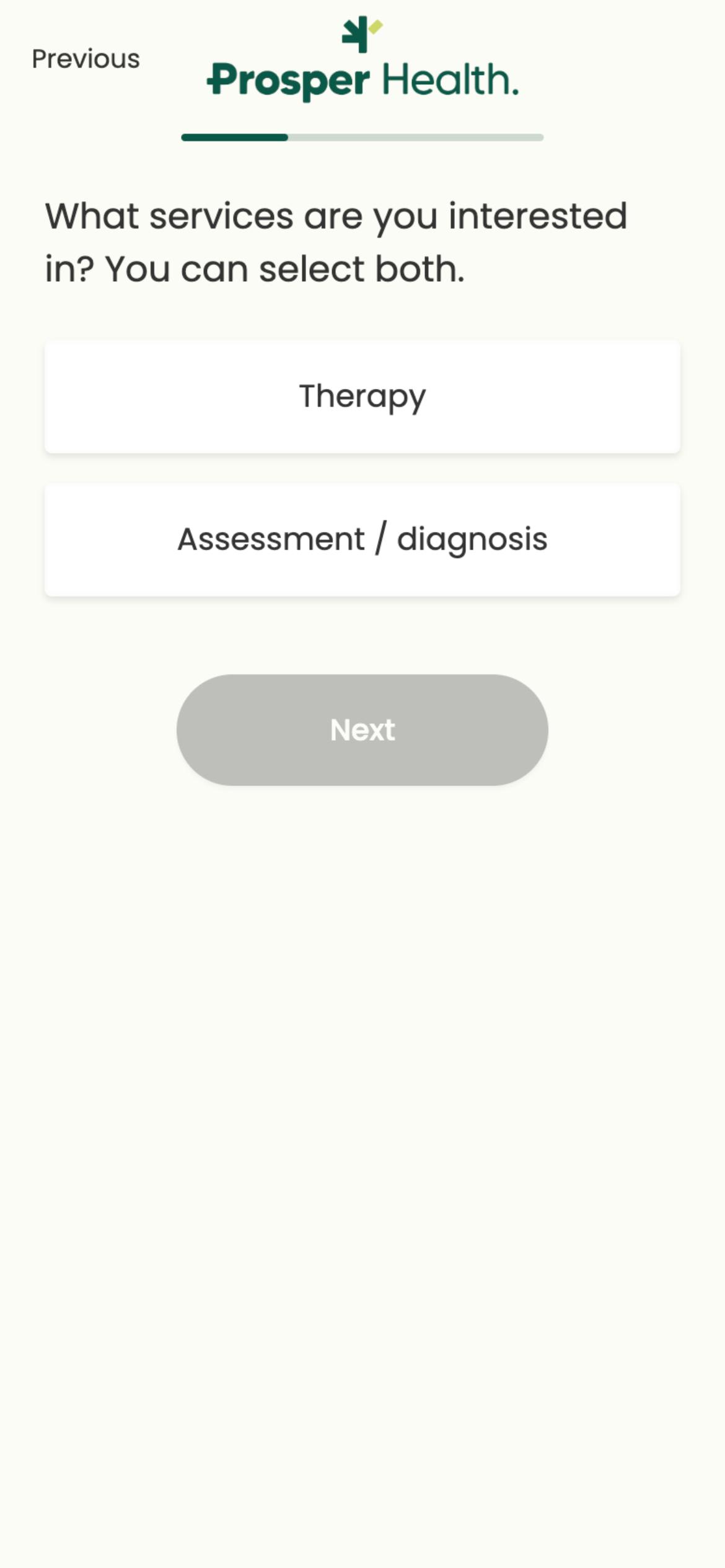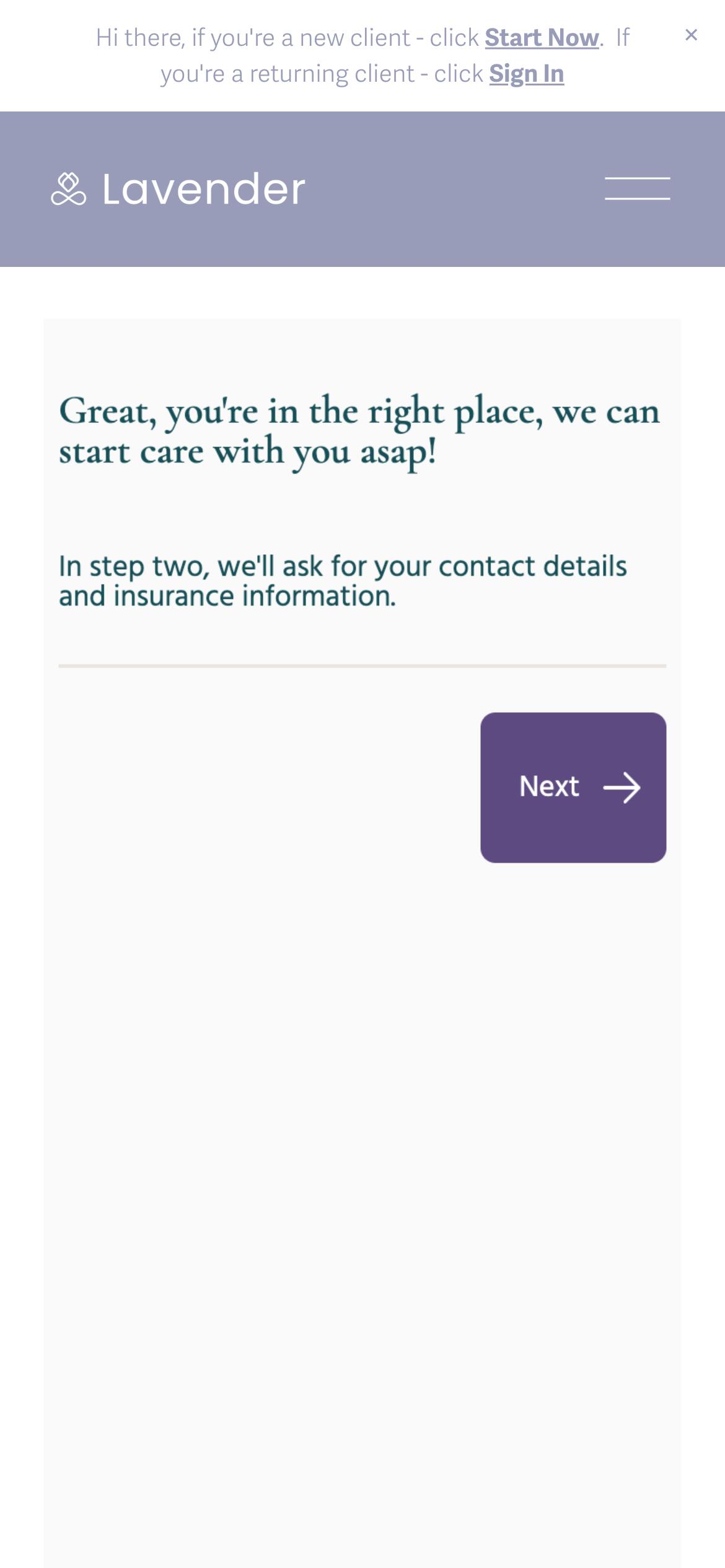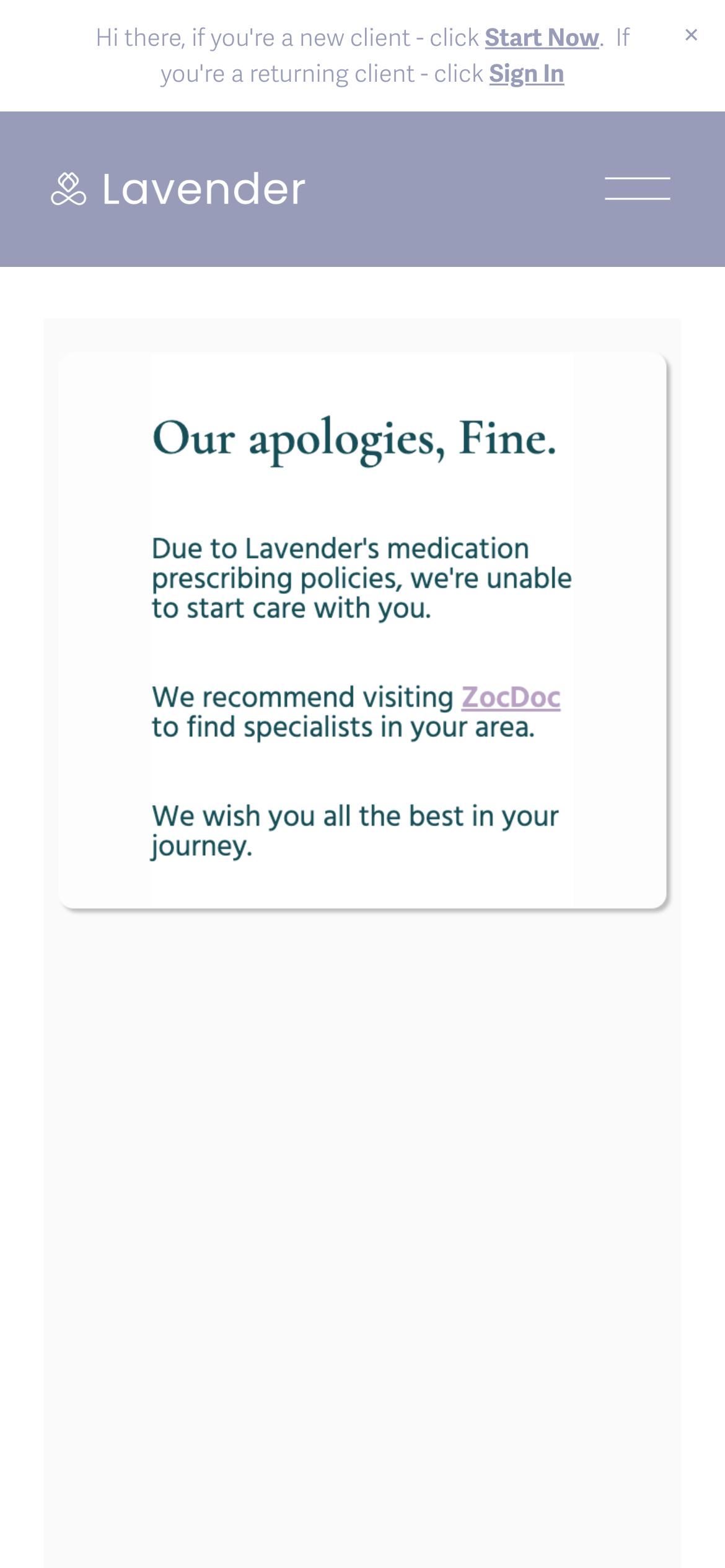Therapy intake forms: a complete guide

Key strategies to streamline patient intake and enhance care
Handling the therapy patient intake process requires sensitivity and specialization due to the unique nature of mental illnesses. Mental health conditions are diverse and multifaceted, often intertwined with feelings of vulnerability, apprehension, and shame. The stigma surrounding mental health can exacerbate these emotions, making it challenging for individuals to seek help or disclose their struggles openly. That’s why it’s important to have a nuanced assessment and onboarding approach that accounts for the complexities involved.
An effective therapy intake form collects vital patient details to tailor personalized care while protecting data. Utilizing a HIPAA-compliant form builder is essential for safeguarding sensitive information and patient privacy.
In this article, we’ll offer practical insights and guidance on crafting effective therapy intake forms that prioritize patient-centered care while ensuring compliance with regulatory standards.
How therapy intake forms enhance patient care
Therapy intake forms help optimize patient care by providing therapists with essential information to tailor personalized treatment plans and fostering trust and rapport between therapists and patients. Let’s take a closer look at the role intake forms plays in improving care:
Understanding patient needs
Comprehensive information: The intake form is an opportunity to gather essential medical information, including past diagnoses, treatments, and medications. It lets you identify the patient’s:
- primary reasons for seeking therapy and any specific issues or challenges they’re facing
- goals and expectations for therapy, guiding treatment planning and progress monitoring.
It’s important to integrate efficiency and effectiveness in the patient intake process, ensuring that every interaction contributes meaningfully to the journey towards healing and well-being.
Tailored treatment: You can use the information gathered in the intake form to develop personalized treatment plans that address each patient’s needs and preferences. It helps you identify specific areas of focus based on the patient's presenting concerns, symptoms, and treatment goals.
Building therapeutic rapport
Since intake forms are one of the initial points of contact between therapist and patient, they set the stage for a collaborative and trusting therapeutic relationship. They provide patients with a platform to express their concerns and experiences, validate their experiences and convey a sense of understanding and empathy from their care providers.
Promoting patient engagement
Patients are more likely to follow through on treatment plans and take ownership of their health outcomes when they’re engaged in the decision-making process. Increased involvement leads to better communication between you and your patients, which in turn results in a deeper understanding of their needs and preferences. Engaged patients tend to experience better health outcomes and higher levels of satisfaction with their care (source).
Essential components of an effective therapy intake form
In order to build a comprehensive form that will collect all the information you need to understand each patient's needs and tailor their care plan, make sure to ask all the necessary questions, obtain consent, and let patients add any other information they feel is important.
You can refer to this list of essential intake form components. You might choose to include all or some of them depending on where the patients are filling out your forms in the process:
- Patient demographics: Basic information such as name, age, gender, and contact details.
- Medical history: Including past medical conditions, surgeries, and allergies.
- Reason for seeking therapy: Understanding the patient's primary concerns and goals for treatment.
- Current symptoms and their duration: Detailed description of present symptoms and their duration.
- Previous mental health treatment: Any past therapy or counseling experiences.
- Medications currently being taken: Get the medication name, start date, end date, and any other information you need. Formsort has a new type of question that allows you to capture exactly this type of data. Get more info later in the article on the Question group - repeating questions feature.
- Family medical and mental health history: Insights into genetic predispositions and familial patterns.
- Substance use history: Inquiring about alcohol, drug, or other substance use.
- Stressors and life changes: Identifying current stressors and significant life events.
- Patient goals for therapy: Establishing treatment objectives and desired outcomes.
- Insurance information: Ensuring coverage for therapy services and billing purposes.
- Emergency contact information: Contact details of a trusted individual in case of emergencies.
- Consent to treatment: Obtaining patient consent for therapy services.
- Confidentiality and privacy policy acknowledgment: Provide access to your confidentiality and privacy policies.
Tips for designing patient-friendly therapy intake forms
In addition to developing the content of your intake form, you’ll need to design the form experience to ensure patients can easily complete it. Factors like mobile responsiveness, clear fonts and coordinated colors, and easy navigation are critical elements of form design best practice can significantly increase patient engagement and form completion.
Some strategies to create intuitive and accessible forms include:
- Responsive design: Ensure the form is accessible on various devices, including smartphones, tablets, and computers, to accommodate patients' preferences and convenience.
- Logical flow: Organize the form in a logical sequence, guiding patients through sections in a natural order that mirrors their thought process.
- Use clear, patient-friendly language: Avoid jargon and use simple, easy-to-understand language to ensure patients can comprehend and complete the form without confusion.
Reduce patient anxiety
Design plays an important role in reducing patient anxiety and improving information quality. Thoughtful elements like soothing colors and intuitive layouts create a calming environment, encouraging patients to provide accurate information.
To minimize frustration and anxiety in the form completion process, make sure to add:
- Data validation: Implementing data validation checks can help ensure that patients enter information accurately and in the correct format, reducing errors and preventing the need for re-entry.
- Error messages: Clear and informative error messages should be displayed when incorrect or incomplete information is entered, guiding patients on how to correct the issue and proceed with form completion.
- Progress indicators: Including progress indicators allows patients to track their completion status and understand how much of the form remains, providing a sense of control and reducing uncertainty about the process duration.
Design elements such as large buttons, checkboxes, drop-down menus, and tooltips can help patients provide accurate and detailed information, enhancing the quality of data collected.
Highlight personalized care
Tailor form design to meet diverse patient needs, including options for preferred communication methods, language preferences, and accessibility accommodations. Use branching conditional logic to ask followup questions based on previous answers and only show relevant questions.
Choosing the right HIPAA-compliant form builder
Mental healthcare practices have to safeguard patient information obtained through intake forms so selecting a form builder that prioritizes and maintains HIPAA compliance is essential. By protecting the confidentiality and integrity of personal health information (PHI), you adhere to patient data privacy regulations and build trust with your patients.
Here are some important criteria to consider:
- End-to-end encryption: Look for a form builder that securely stores and transmits patient data
- Audit trails: You should be able to see who accessed the form builder and when, ensuring accountability.
- Data ownership: Where patient data is stored and who has control over it should be clear and accessible.
- Business associate agreement (BAA): The form builder should be willing to sign a BAA, legally committing to protecting patient information.
- Patient consent and e-signatures: Does the platform have a feature that enables patients to consent to data collection and sign forms electronically?
- Data integration settings: The form builder should give you control over where protected health information (PHI) is sent and stored.
- Branding customization: Your forms should reflect your practice, not the form builder’s. Does the platform have custom design features that allow you to tailor your form’s look and function?
- Authenticated forms option: The form builder should be capable of letting you create forms that can be accessed and completed only to logged-in responders to ensure data security.
- Customer support: Choose a form builder with responsive customer support to address any issues promptly.
Therapy intake form examples
Formsort's clients are building therapy intake forms to address the unique needs and concerns of their patients. These customized forms, crafted with precision, are tailored to solicit targeted information that aligns with the specialized focus of mental health services. By leveraging Formsort's HIPAA-compliant form builder alongside their expertise, therapy practices can design intake forms that cover a spectrum of mental health factors—from emotional well-being to treatment preferences—facilitating a comprehensive assessment of each individual's needs and circumstances.
Arise
Arise is a virtual clinic specializing in eating disorder management. Their range of services are tailored to address the complex needs of those struggling with eating disorders, including personalized therapy, nutritional counseling, and medical monitoring. The Arise intake form is mobile responsive, inclusive, and efficient–first qualifying patients before asking more detailed questions. Dropdown lists and large buttons make it easy to fill out the form, while the option to answer some questions later helps reduce anxiety.


Prosper Health
Prosper Health provides diagnostic services and therapy for autistic adults. Their team of autism specialists offers effective and compassionate care tailored to challenges such as sensory issues, anxiety and depression, and relationships. Prosper Health’s short intake form collects essential patient information, using large, clear fonts and soothing colors. Data validations and error messages ensure they’re obtaining accurate patient information and preventing user frustration.


Lavender
Lavender is an online psychiatry clinic for anxiety and depression, offering a blend of talk therapy and medication. Patients can effortlessly explore therapist profiles, schedule appointments, and participate in confidential virtual sessions. Lavender's intake form includes an upfront qualification form that helps determine if Lavender is a good fit for prospective patients. They even suggest alternative resources for patients who don’t qualify.


Optimize your therapy intake form with Formsort
Effective therapy intake forms are an essential step in providing personalized care and fostering positive patient experiences. Implementing key strategies can streamline your intake process, enhance patient engagement, and improve treatment outcomes. Leverage Formsort's innovative form builder to build intuitive and user-friendly intake forms that meet the diverse needs of your patients while maximizing efficiency and effectiveness.